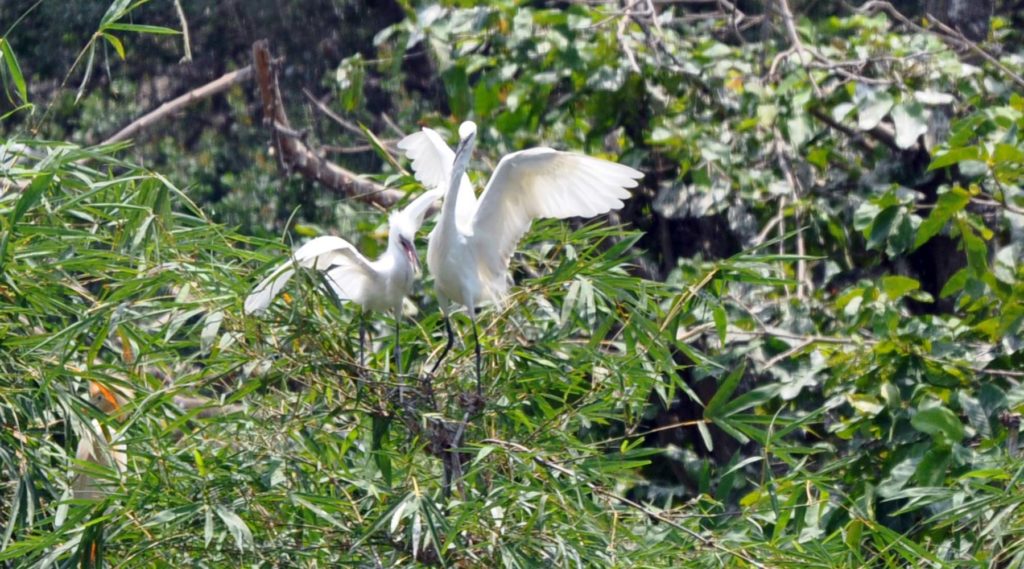What is Bang Lang Stork Sanctuary?
Location & Scenery
Bang Lang Stork Sanctuary is located in Thot Not District, about 50–60 km from Can Tho City and around 15 km from Long Xuyen. It lies along National Highway 91, which makes it fairly easy to reach if you’re traveling between these two cities.
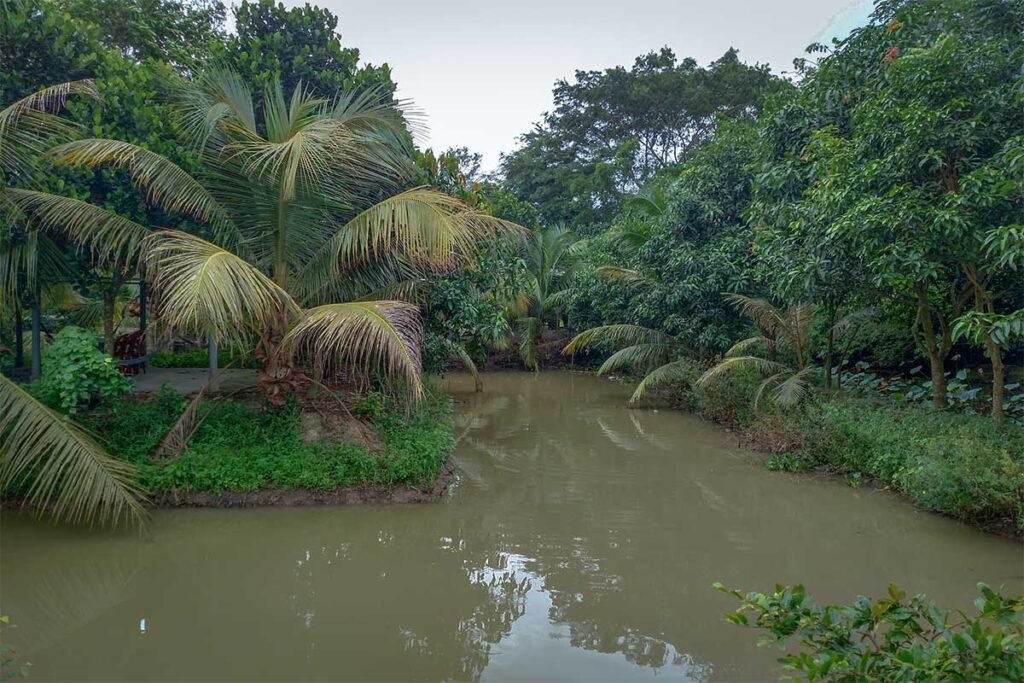
The area itself is rural, with rice fields stretching to the horizon, small canals crisscrossing the land, and narrow countryside roads that wind through villages. The sanctuary is basically a pocket of trees where the storks gather, so don’t expect a large national park—it feels more like a bird-filled corner of the Mekong countryside.
History & Origins
The sanctuary began by chance in 1983, when a small flock of storks chose a rice field owned by a local farmer, Mr. Nguyen Ngoc Thuyen (often called Mr. Bay Thuyen or Bay Co), as their nesting ground. Instead of driving them away, he encouraged their presence by planting more trees for shade and nesting. Over time, the numbers grew into the thousands, and by the 1990s the site was large enough to attract curious visitors. Today, the sanctuary covers around 12,500–16,000 m² and has become one of the best-known stork gardens in the Mekong Delta.
The name “Bang Lang” comes from the crape myrtle tree (known for its bright purple blossoms in summer), which once lined the roads leading to the site. Most of those trees are gone now, but the name stuck, and locals still refer to the area as Bang Lang Stork Garden.
The storks & Other birds
Bang Lang is home to an estimated 200,000–300,000 birds depending on the season, with more than 20 stork species nesting in its trees. Some of the most common are cattle egrets, little egrets, and painted storks, while rarer species such as black-crowned night herons can also be spotted.
Storks here follow their natural breeding cycle, laying eggs several times a year. It usually takes six to seven months for young birds to mature, which is why the population continues to grow steadily. During the breeding season, the trees are packed with nests and the noise of storks calling, feeding, and fighting for space.
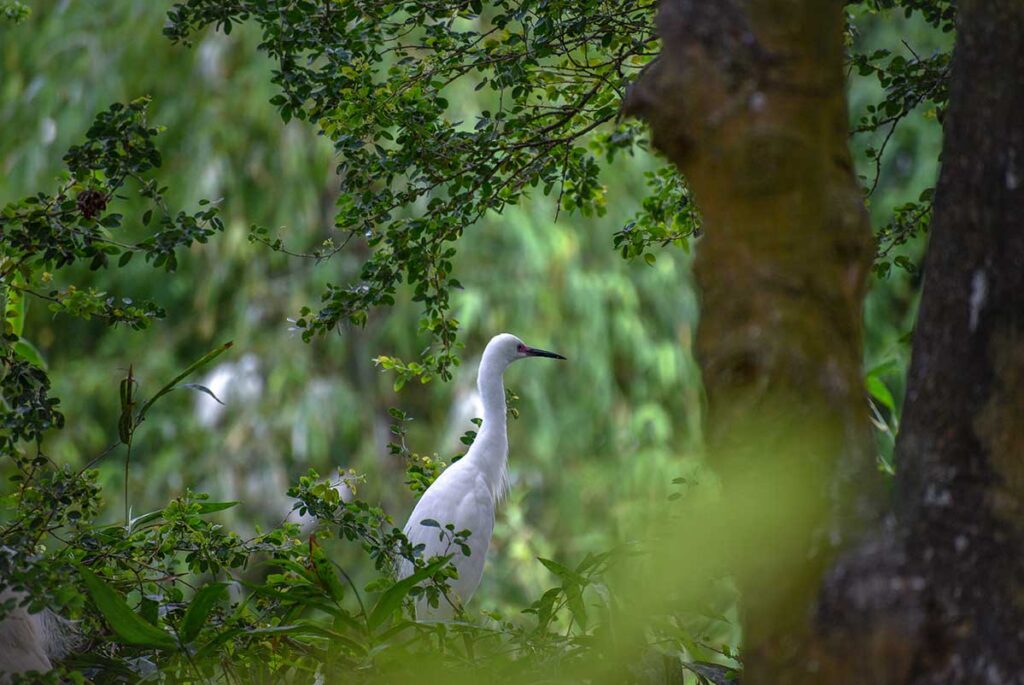
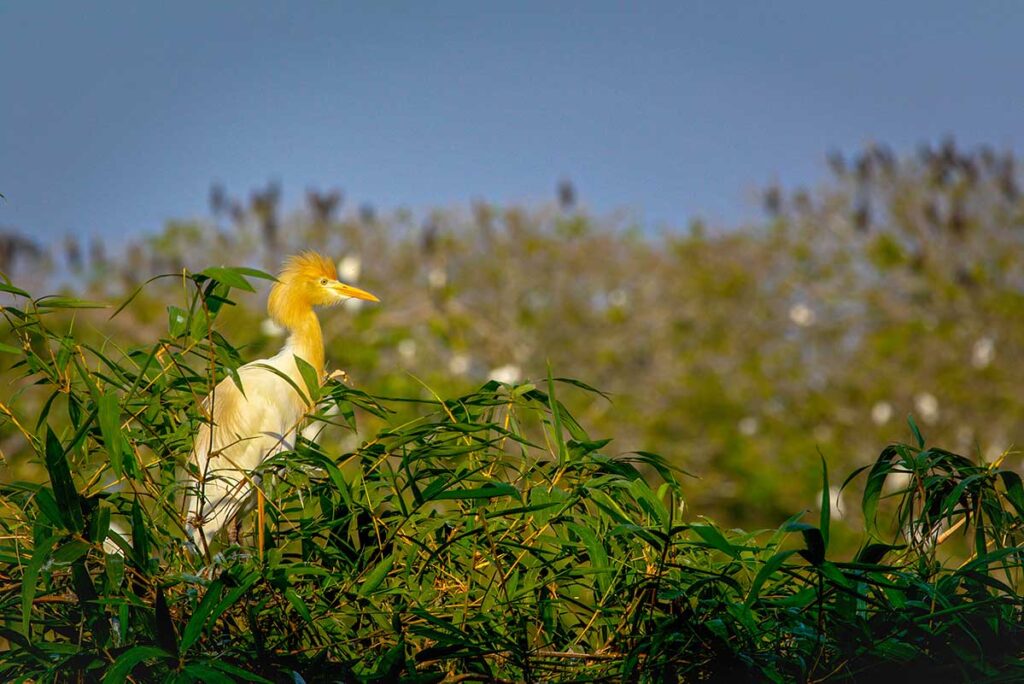
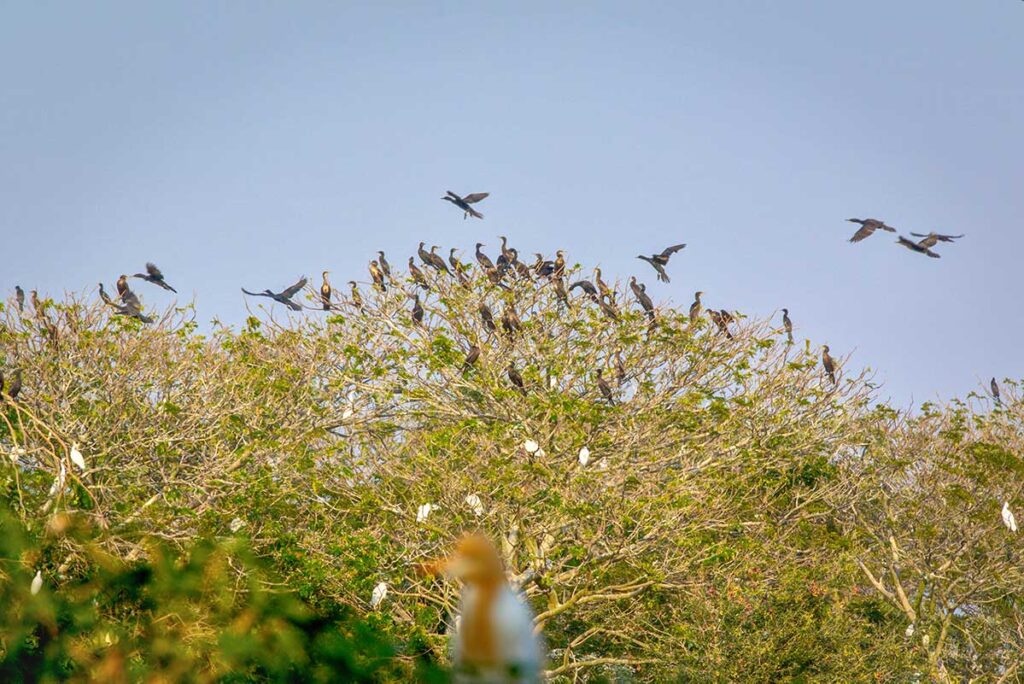
Besides storks, the sanctuary attracts other wetland birds like pelicans, cormorants, and herons. The density of birds in such a small area can be overwhelming—sometimes impressive, sometimes a bit chaotic—but it’s what makes this place unique compared to simply spotting the occasional bird along a river or rice field.
Best time to visit Bang Lang Stork Sanctuary
Choosing the right moment to visit Bang Lang Stork Sanctuary makes all the difference. At the right time, you’ll see thousands of storks filling the sky in a dramatic show of nature; at the wrong time, you might find only a handful of birds and a quiet grove of trees. Since this sanctuary is quite far from Can Tho and not surrounded by many other attractions, planning your visit around the bird cycles is important if you want the trip to feel worthwhile.
Best season
Bang Lang Stork Sanctuary is at its most impressive during the breeding season, which runs roughly from August to January. At this time the trees are heavy with nests, and the air is filled with thousands of storks flying, feeding, and squabbling for space. If you want the best chance of seeing the site alive with bird activity, this is when to come.
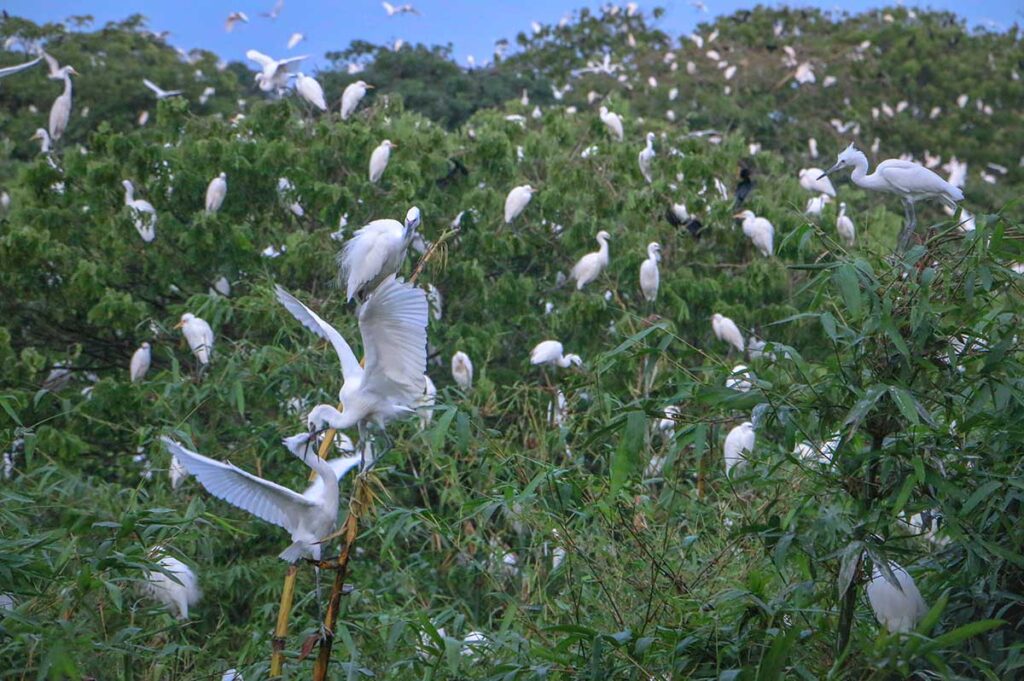
From February to April, activity slows down a little, but you may still spot herons nesting and raising their young. This period also coincides with flowers blooming along the riverside and, in some years, higher water levels that make the landscape around the sanctuary feel more atmospheric. Boat access is sometimes possible when the canals flood, though this is less common now with improved road connections.
Best time of day
The most magical moments are at sunrise and sunset. In the early morning (6–7 AM), thousands of storks take off together to forage across the delta, creating a dramatic sight against the first light of day. In the late afternoon (5–6 PM), they return in huge flocks, filling the trees again and turning the sky into a noisy, chaotic spectacle. Midday, by contrast, is usually quiet—many visitors report being disappointed if they arrive around noon when most birds are away feeding.

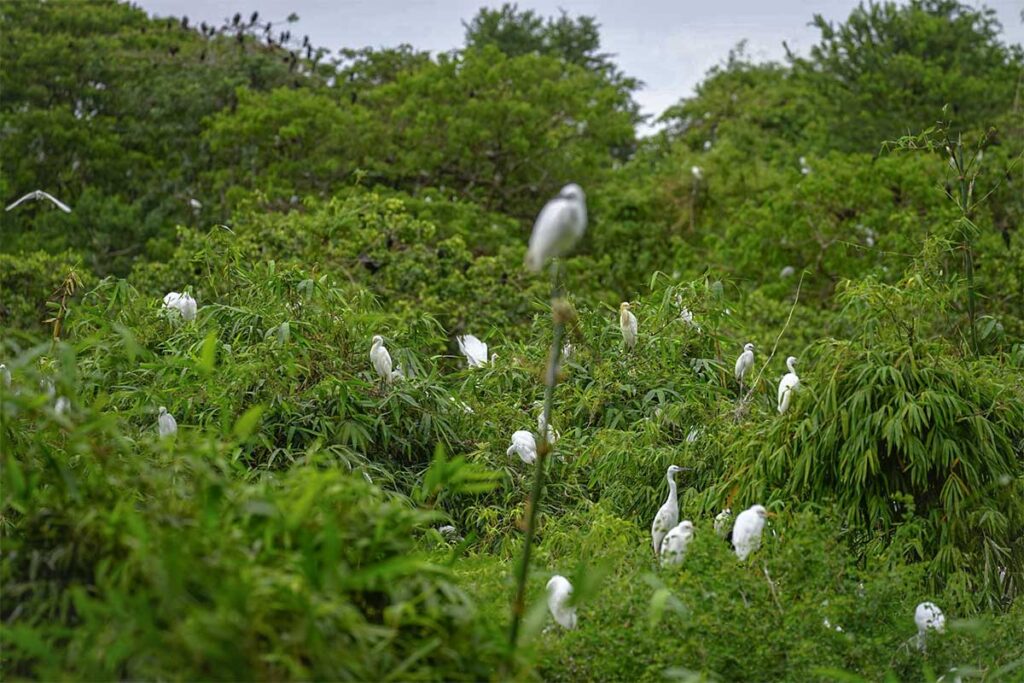
Visiting outside season
Outside the main breeding season, the sanctuary is noticeably quieter. You may still see some storks and herons, but not in the dramatic numbers that fill the trees in late summer and winter. Nesting activity is reduced, and large synchronized fly-outs are less common. The atmosphere shifts from a bustling bird colony to a calmer countryside grove, with just scattered flocks moving in and out during the day.
Highlights of visiting Bang Lang Stork Sanctuary
The main reason to come to Bang Lang is simple: it’s all about the birds. Unlike larger national parks, this is a compact site with just a handful of things to do, so it helps to set expectations before making the trip.
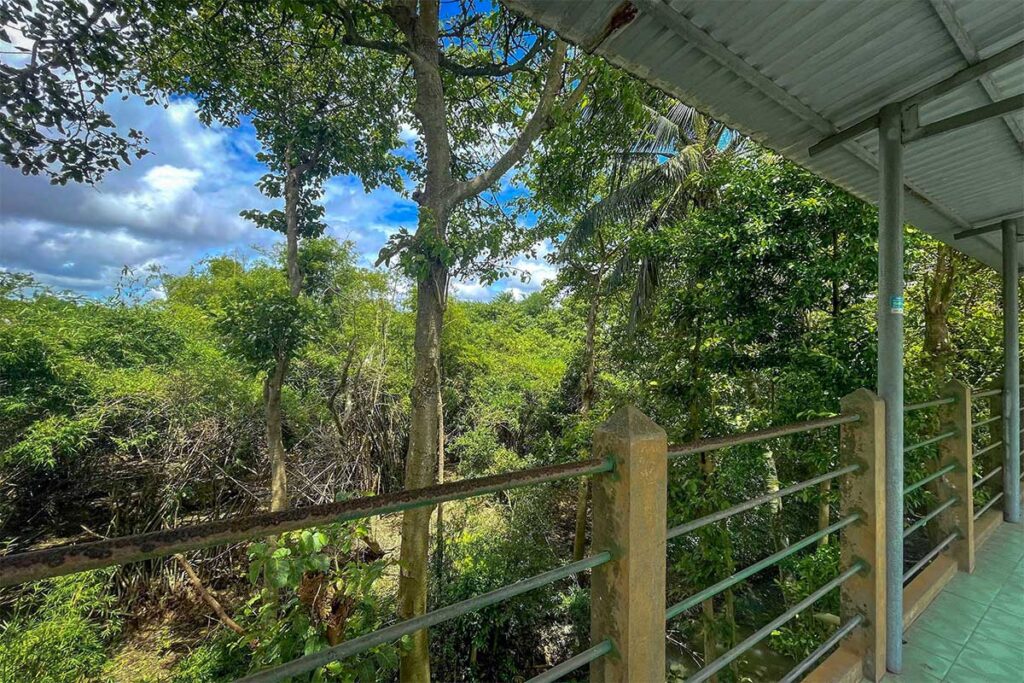
Watching from the observation tower – The highlight is climbing the viewing platform, where you can see thousands of storks packed into the treetops. At dawn and dusk, the sight of the flocks taking off or returning is the real show. Binoculars aren’t essential because the birds nest so close, but they can help you spot smaller species.
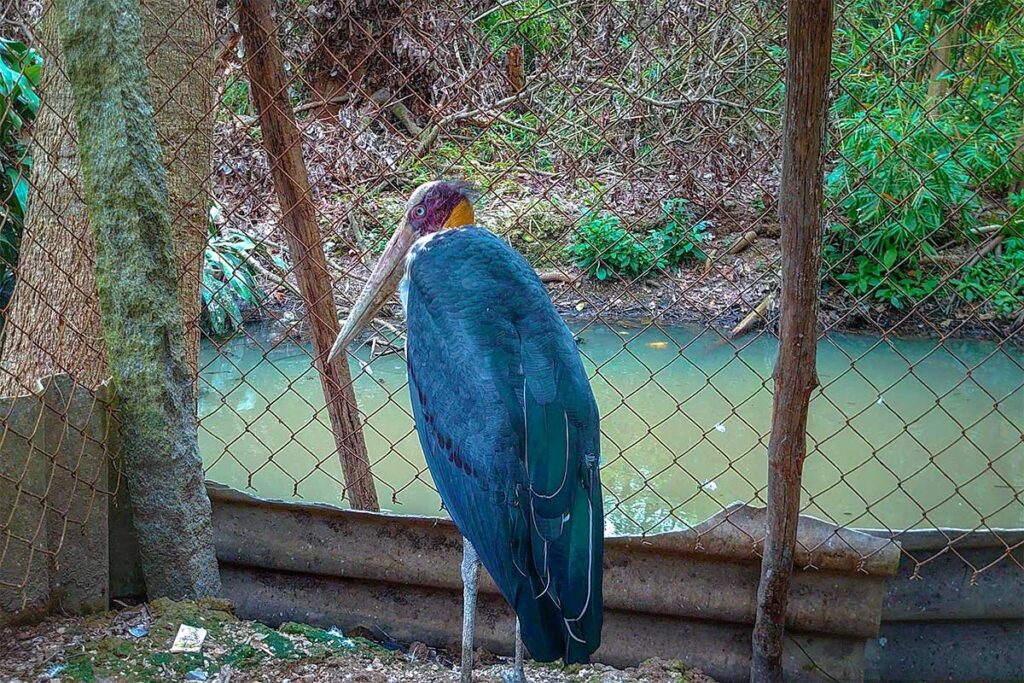
Rescue enclosure – A small area near the entrance houses rescued or injured birds, including rare species like adjutant storks. It gives a closer look at species you might not otherwise see in the wild, though the facilities are very simple.
Seasonal boat access – In the past, visitors often arrived by boat when the canals flooded, drifting into the sanctuary through half-submerged forest. With better road connections, this is rare today, but during high water you might still arrange a short boat ride nearby.
Countryside backdrop – The sanctuary itself is small, but the setting is classic Mekong Delta: rice fields, orchards, and narrow village roads. Cycling in the area can be rewarding, though it’s outside the sanctuary rather than within it.
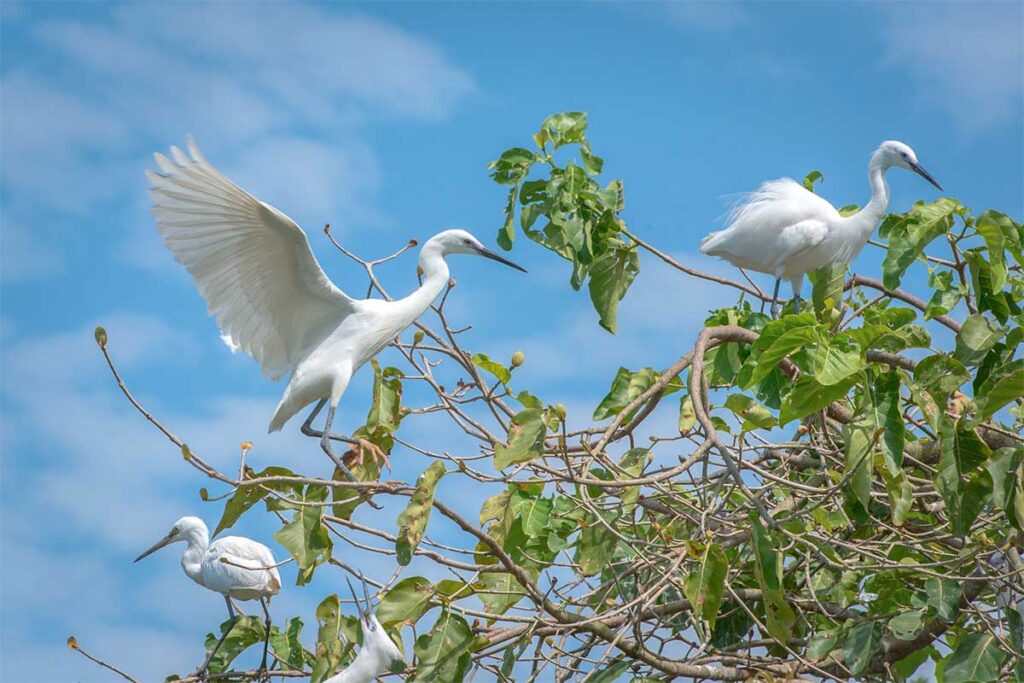
Overall, the experience is short and focused. If you come expecting trails or multiple activities, you may be underwhelmed. If you time it right, though, simply standing on the tower and watching the skies fill with birds can be memorable.
How to get there
Base cities
Most travelers set out from Can Tho, around 50–60 km away, which takes roughly an hour by car. This is the most common base since Can Tho has good transport links, accommodation, and other attractions like the floating markets.
Another option is Long Xuyen, only about 15 km from Bang Lang Stork Sanctuary. It’s a quieter, less touristy city, so fewer travelers use it as a base, but if you’re heading that way it makes for a natural stop. If you plan to travel between Can Tho and Long Xuyen, Bang Lang lies more or less on the route, making it easy to combine.
Private car or tour
Hiring a private car (with or without a guide) is the easiest option. You’ll have flexibility on timing, which is important if you want to catch the morning or evening stork flights. A driver can also combine Bang Lang with other countryside stops to make the trip more worthwhile. Tours from Can Tho sometimes include this stop, but you can also arrange a custom itinerary if you prefer to avoid rushed group schedules.
Motorbike
For independent travelers with experience and a valid license, riding a motorbike from Can Tho or Long Xuyen is possible. The road is straightforward but narrow in parts. If you’re not confident about driving yourself, an Easy Rider–style tour (riding on the back of a local driver’s bike) is a safer and more relaxing way to do it.
Cycling
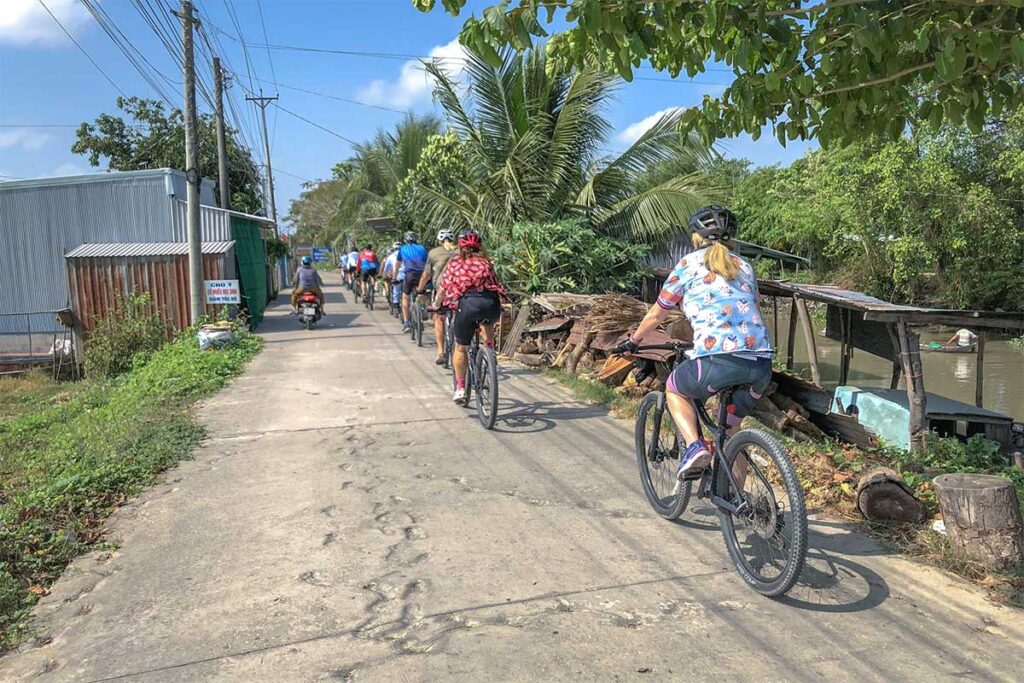
Cycling all the way from Can Tho is ambitious, given the distance, heat, and traffic, so it’s best suited to strong cyclists with good equipment. Most rental bikes provided by guesthouses in Can Tho aren’t sturdy enough for the journey. A better option is to join a guided cycling tour, where you can use higher-quality bikes and combine the sanctuary with stops through villages, rice fields, and canals.
Boat
Although you can’t reach Bang Lang Stork Sanctuary itself directly by river, the Hau River flows just a few kilometers away. With a private arrangement, it’s possible to travel part of the way by boat from either Can Tho or Long Xuyen. Some travelers choose to bring bicycles on board, get dropped off at a riverside village, then cycle the short distance inland to Bang Lang. After visiting, you can continue biking back through the countryside to Can Tho, or rejoin your boat further downstream. It takes more planning than simply going by car, but combining a boat ride with cycling is a scenic and memorable way to make the journey feel like an adventure rather than just a transfer.
Is Bang Lang Stork Sanctuary worth visiting?
Bang Lang Stork Sanctuary is worth the effort if you’re genuinely interested in birds or if you can time your visit during the breeding season and at sunrise or sunset. At these moments, watching thousands of storks fill the sky is a rare and memorable sight in the Mekong Delta.
That said, the sanctuary is very small and only really offers one activity: climbing the tower to see the birds. If you expect a half-day of varied activities, you may leave underwhelmed. The site feels more like a quick stop than a destination in itself.
The visit makes the most sense if you combine it with countryside exploration—cycling, boat rides, or local village stops—or if you’re already traveling between Can Tho and Long Xuyen, where it fits naturally along the route. On its own, it’s not a must-see for every traveler, but at the right time and with the right expectations, it can be a highlight for nature lovers.
Alternatives & Similar nature sites
While Bang Lang Stork Sanctuary is the easiest place near Can Tho to see large flocks of storks, it isn’t the only birdwatching spot in the Mekong Delta. If you’re keen to explore more diverse ecosystems or want a fuller experience, there are several alternatives worth considering:
- Tram Chim National Park – Often called the top birdwatching destination in the Mekong Delta, Tram Chim is home to hundreds of species, including the rare Sarus crane. Boat tours take you deep into the wetlands, offering a more varied experience than Bang Lang.
- Tra Su Cajuput Forest – Near Chau Doc, this flooded forest is known for boat rides through waterways lined with cajuput trees. Birdlife is plentiful, though the experience is as much about the landscape as the birds.
- U Minh Thuong and U Minh Ha – These national parks protect vast swamp forests further south. They’re less visited but provide a wilder, more off-the-beaten-path feel with chances to see waterbirds and unique ecosystems.
- Other stork gardens – Smaller bird sanctuaries are scattered around the delta, though they tend to be local-scale versions of Bang Lang and not widely set up for visitors.
If birdwatching is your main focus, you can also check our dedicated guide on the Best bird sanctuaries in the Mekong Delta for a full overview of options.
